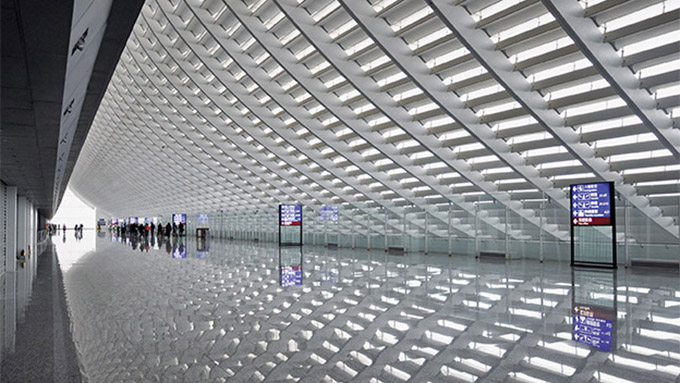Regeneration of Taoyuan International Airport, Terminal 1
March 22, 2016

The Taiwan Taoyuan International Airport Terminal 1 was built in 1979 and its design was influenced by Eero Saarinen’s Washington Dulles International Airport. Featuring a prestressed structure that was considered advanced at that time, the old Terminal 1 was serving an estimated number of 5 million passengers annually.
While still in good architectural condition, the 30-year-old terminal was already operating beyond its capacity and had become outdated. Due to subsequent rapid growth of passengers, a regeneration project was started not only to reestablish a new main gateway, but also to expand the terminal and increase passenger capacity to 15 million a year without tearing down the existing structure.
DESIGN
The goal of the redevelopment project was to create a sense of continuity with the past while accommodating change.
PROJECT DATA
| Project Name | Regeneration of Taoyuan International Airport, Terminal 1 |  |
|---|---|---|
| Location | Dayuan Township, Taoyuan County 337, Taiwan | |
| Completion Date | June 2013 | |
| Site Area | 33,719 square metres | |
| Gross Floor Area | 107,610 square metres | |
| Building Height | 4 storeys plus 1 basement | |
| Clients/Owners | Civil Aeronautics Administration, Ministry of Transportation and Communications | |
| Architecture Firm | Norihiko Dan and Associates | |
| Principal Architect | Norihiko Dan | |
| Design Team | Ming-Hsien Wang; Eiji Sawano; Austris Jankovskis; Ralitsa Kafova; Masato Shiihashi; Tadashi Yoshimura | |
| Supervision Architect | SHEU Architect and Associate | |
| Structural Engineer | Structure Design Group (Kunio Watanabe) | |
| Mechanical Engineer | Uichi Inoue Equipment Laboratory | |
| Air-conditioning | Uichi Inoue Equipment Laboratory | |
| Interior Architect | Norihiko Dan and Associates | |
| Landscape Architect | Norihiko Dan and Associates | |
| Images/Photos | Norihiko Dan and Associates |
To read the complete article, get your hardcopy at our online shop/newsstands/major bookstores; subscribe to FuturArc or download the FuturArc App to read the issues.
